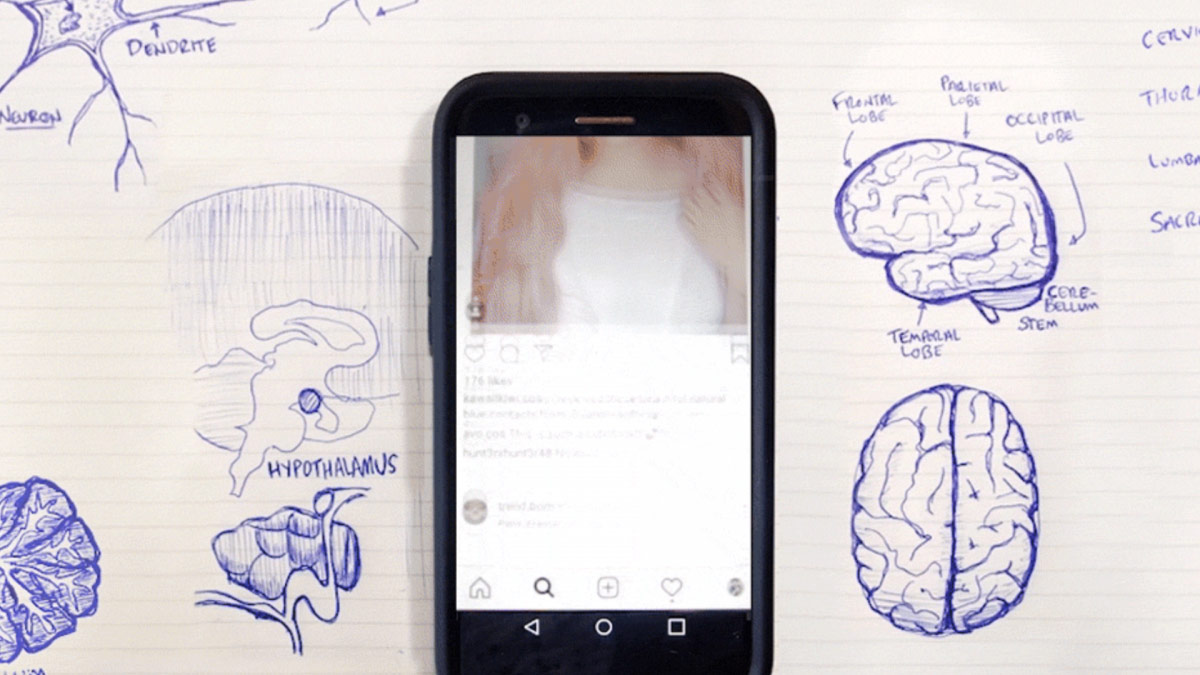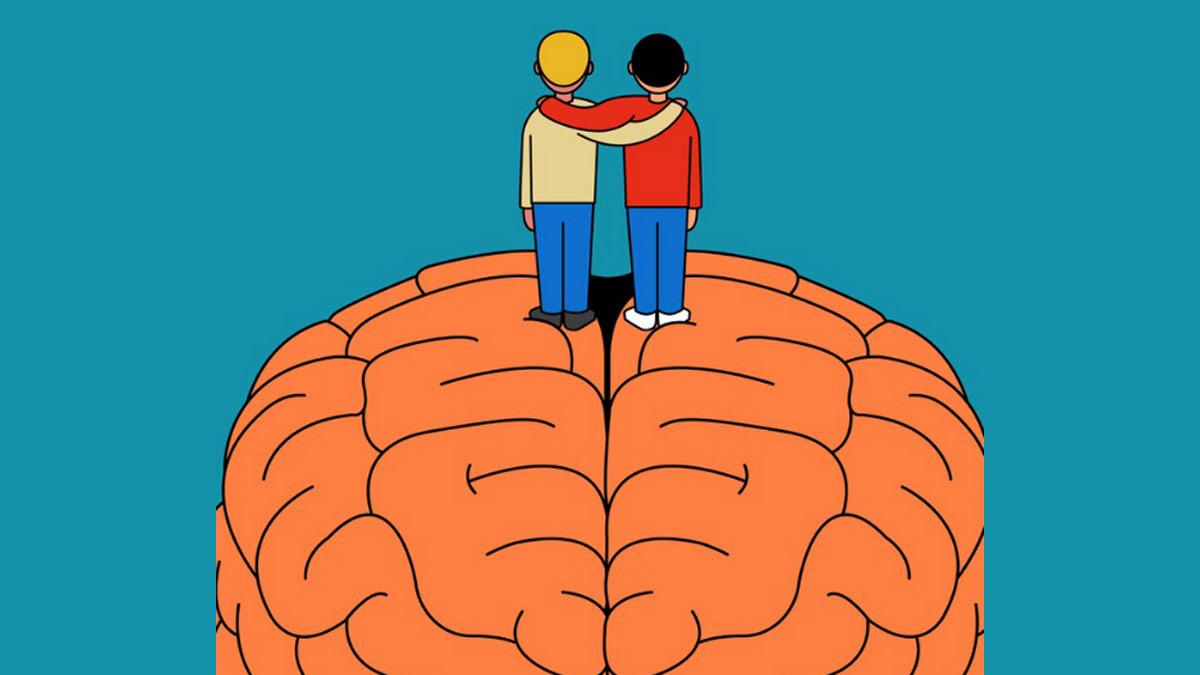The babies born in the first decade of the twenty-first century, the children of generation Z, are now living in an era known as the “digital revolution”, a time when the growth in devices and technology are booming. Incidentally, the percentage of adolescents from 2004 to 2014 grew by a solid 37%. That is no trivial amount! Almost every teenager, worldwide and especially in the United States, has access to the internet and an electronic device, with a vast majority of them having their own cell phones as well. Is it possible that this “digital revolution” as it is so aptly called, may be linked to this alarming increase in mental health issues pressuring teenagers? This was a problem that the researchers at NIH decided to take into consideration.
Before talking about the effects of the internet and electronic technologies, it is important to understand how the adolescent brain works. Many of you, parents, fellow teenagers, or even younger siblings may have noticed certain characteristics in your teenager including, heightened risk taking and recklessness, a desire to do what gives them happiness rather than what is right, and an unfortunate change in priorities from family to friends. Well, many of these changes are due to a phenomenon referred to as brain plasticity. Now you are probably surprised to hear that your brain is plastic, but what plasticity really means is that the brain is constantly changing and being molded by experiences. This means that synapses in the brain will be altered and changed leading to a sense of “instability in the brain” during that time frame.
Because of this constant change that is occurring in the brain, teenagers tend to be less firm in their resolve in staying away from peer pressures and temptations, including the temptations of electronics and the internet. This is coupled with the fact that very few individuals have actually embraced the teaching of electronics and the internet, and thus adolescents may take a risky choice and succumb to the various grotesque distractions of the internet. Keep in mind that as the brain is plastic, these negative interactions will start to gain prominence in the brain leading and will slowly grow in importance in the person’s mind, causing them to continuously spiral downward. This lack of education and guidance for teenagers when using electronic devices is certainly not beneficial or helpful to the students in any way.
Needless to say, the entertainment industry has been massively bolstered by the exponential rise in technology. Adolescents spend an average of about 10.5 hours a day using electronics for entertainment purposes from television to music and video gaming. Many teenagers in fact get addicted to video games and you may have noticed it is often hard to peel your teenager away from the game. Why does this happen? Well playing video games excites the same pathway that eating, drinking, do and that is the reward pathway. When this reward pathway gets stimulated, dopamine, the pleasure neurotransmitter, increases in quantity in the nucleus accumbens, leading to the user feeling extra happy and light hearted. We crave this feeling and this leads to addiction, the force that makes it so hard to peel ourselves away from the game..
A common hypothesis that many individuals have is that an increase in violent video games leads to an increase in teenage crime and it is not hard to see why this may be. However interestingly, as studies have noted, while there has been an increase in violent video games (quadruple as much in fact), and the number of violent crimes have increased, murders committed by teenagers decreased by almost 72% and teenage violent crime by 49%. This by no means indicates a causal relationship, and it is evidently hard to imagine one, but it is an interesting correlation to observe nonetheless. Yet, as teenagers get addicted to these video games, both violent and non violent, and they started to take control of the brain, they push away other things, such as homework and schoolwork, to regions of lesser importance.
A final aspect that is very important to mention when talking about both teenagers and the internet is the social aspect. You may have heard the common phrase “humans are social animals” and thus it may not come as a surprise that social media platforms are so popular and powerful. Millions of teenagers around the world have some form of social media, from facebook, to instagram, to snapchat, or even twitter. Yet, the prefrontal cortex, the part of our brain responsible for making good social decisions, only finishes maturing towards the end of puberty, which corresponds to the very ends of adolescence and the teenage years. Therefore, you may not be surprised to hear that teenagers will thus tend to make risky social decisions, from posting or saying information that is not respectable, or perhaps sending a rude or risky text to a friend, or even engaging in online bullying while meaning it as a joke. The social filter of teenagers is still developing and giving them a social forum where they are essentially free to express whatever they want is bound to have some negative side effects.
And then there is the other debate on whether social media actually makes teenagers more social or less social. While on one hand, teenagers may decrease the physical amount of time they spend with friends or their physical interactions as to catch up instead with their friends on the internet, on the other hand, it gives others who are often afraid of voicing their opinions in front of their peers physically a forum to share more about themselves. It encourages more connections, as demonstrated by the fact that the average teen has 800 friends on facebook, but it decreases the number of deep and meaningful connections, as less than one fourth of their facebook friends are truly their friends who they connect with. It has led to harsh cyber bullying which affects so many young children, but it also has given others a forum to voice their problems and their pain, enabling them to seek help and comfort from counselors or peers who are experiencing similar difficulties to them. This conundrum has continued to puzzle and baffle sociologists as they have been unable to find a clear and definitive answer to this social aspect of the internet.
In the end, we have still not been able to come with a firm answer on whether or not the digital revolution has been a welcoming positive, or a harsh negative, on the teenage brain. What we do know is summarized quite beautifully as a title in a report done by The Pew Internet and American Life Project Foundation states “Millennials will benefit and suffer due to their hyperconnected lives”. The social world spurred on by the digital revolution has certain positives that will improve aspects of life for many teenagers, but it also has many undebatable negatives that disguise themselves perfectly to lure and fool teenagers. We cannot have a clear answer if the electronic media and iPhones are really a detriment or an aid to teenage neurobiology or society, but we can come to a consensus that it is a little bit of both.
References
Viatcheslav Wlassoff, PhD. “Social Media Anxiety Disorders: What’s Going on in the Brain?” Brain Blogger Social Media Anxiety Disorders Whats Going on in the Brain Comments, www.brainblogger.com/2017/12/27/social-media-anxiety-disorders-whats-going-on-in-the-brain/
Neurochemical Effects of Nicotine, iprc.indiana.edu/training/courses/Tobacco Dependence and Treatment/a_04_05_01.html
Amos, Jason. “Explaining Teenagers’ Attraction to Social Media and Risky Behavior-And Why It’s Not Necessarily a Bad Thing.” Alliance For Excellent Education, all4ed.org/explaining-teenagers-attraction-to-social-media-and-risky-behavior-and-why-its-not-necessarily-a-bad-thing/
byhealthrewardz, Posted. “Tips to Boost Your Brain Chemicals Naturally.” Healthrewardz.com, 18 Aug. 2020, healthrewardz.com/2019/03/28/tips-to-boost-your-brain-chemicals-naturally





